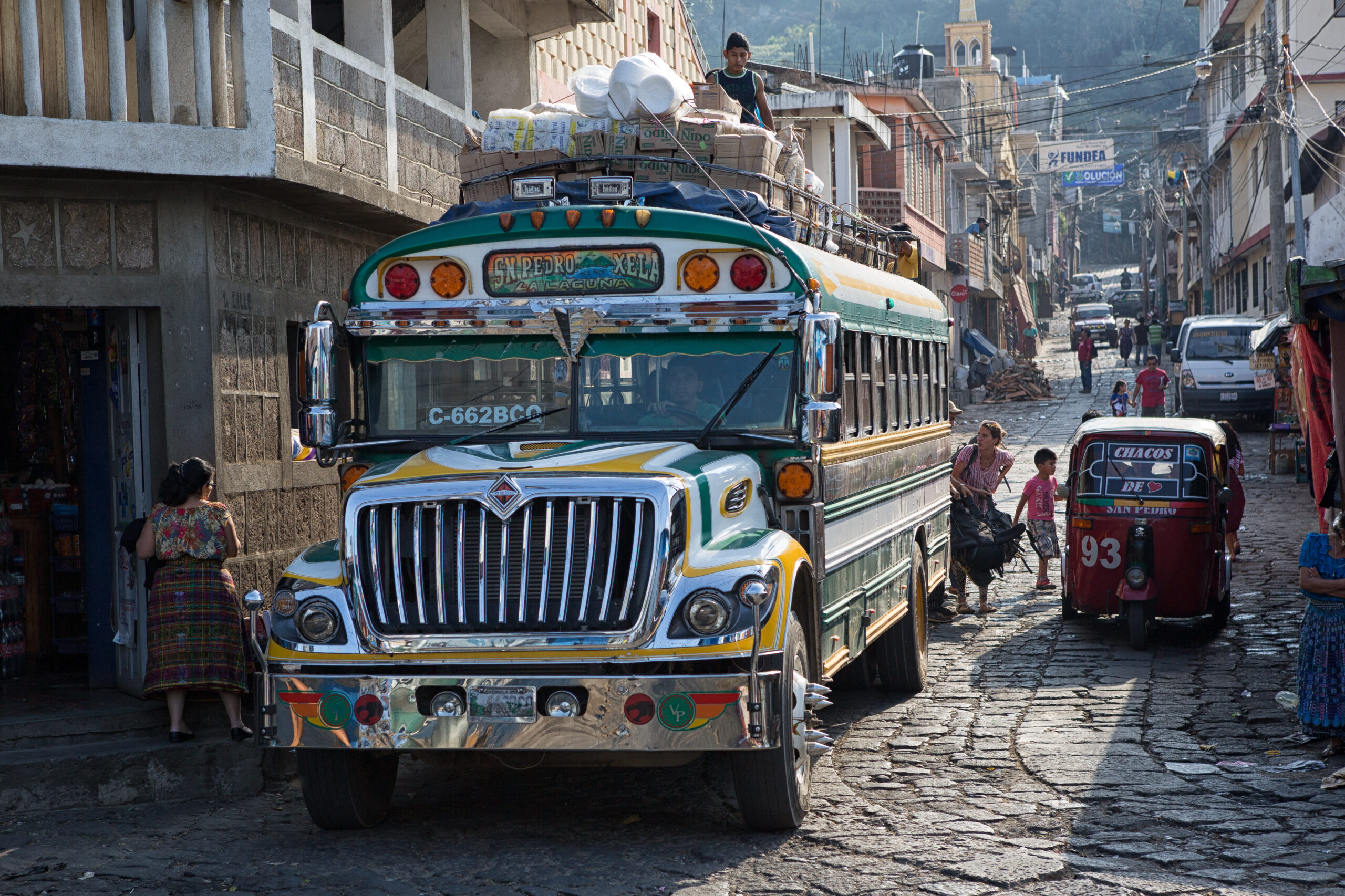With its pyramids, ruins, jungles, volcanoes and thriving Mayan culture, Guatemala represents the best of Central America.
Exploring this fascinating corner of the Americas is a treat – yet getting from A to B may take longer than you think.
In a place where the average income hovers around US$400 a month, owning a car is out of reach for most Guatemalans, so the vast majority of locals rely on public transport to get around. This means buses are almost always packed – but also that there’s almost always a bus going where you want to go.
Travelers will be pleased to hear that Guatemala’s public transport system is extensive and inexpensive, if not always particularly efficient. Buses will reliably get you to your destination – but you should board prepared for long travel days, bumpy roads and some discomfort.
Short distances in the small country are misleading: with poorly maintained, winding roads, slow-moving traffic and frequent road closures, it will almost always take longer to get there than you think. Options exist for explorers of all budgets – and in such a vivid country, the journey is all part of the experience.
Here are our tips for getting around in Guatemala.
Buses are the cheap and easy way to get around in Guatemala
Currently, there are no passenger services on Guatemala’s limited rail network, making the main form of mass transportation the humble bus. Buses in Guatemala come in two classes: comfortable first-class coaches and second-class “chicken buses” – revamped US school buses that go almost everywhere.
First-class buses – also known as “express buses” – operate on busy routes between major destinations, with regular services from Guatemala City to Quetzaltenango, Huehuetenango, Flores (for Tikal) and Panajachel (for Lago de Atitlán). Buses also connect major cities to some beach destinations as well as to international border crossings with Honduras, Mexico, El Salvador and Belize.
Not all bus lines are created equal, however. Some buses have toilets; others don’t. Some have a TV screen up front playing music videos or action movies dubbed into Spanish, while others let you enjoy the scenery or have a snooze in peace and quiet. First-class buses are about double the price of their second-class counterparts, but they’re also much faster, safer and more comfortable.
Known locally as…
Click Here to Read the Full Original Article at Stories – Lonely Planet…
